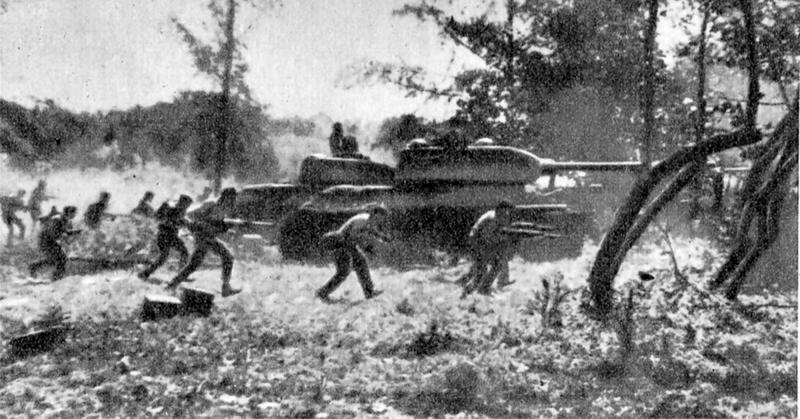Bay Of Pigs: An Attempt To Overthrow A Government Financed By The U.S.
By | April 15, 2021

Overthrowing Castro and ending his revolution was supposed to be simple. After years of planning that dated back to the Eisenhower administration, American-backed forces were meant to stealthily land on the beach at Playa Giron at the mouth of the Bay of Pigs before taking the airfield and waiting for full U.S. involvement. In reality, the comedy of errors that was the Bay of Pigs irreparably soured Soviet and American relations and further entrenched the West in the Cold War.
Taking Down Castro
When Fidel Castro and his group of guerrilla fighters removed Cuban dictator Fulgencio Batista from power at the end of 1958, chaos broke out in Havana. Banks, oil refineries, and sugar and coffee plantations were seized by the new Cuban government, who reached out to their Soviet buddies to tag them into the action.
The U.S. didn't love, like, any of that. Eisenhower stopped importing sugar from Cuba, and after the French ship Le Coubre was destroyed in Havana Harbor in March 1960, Castro publicly blamed the U.S. even though no one knows to this day what sank the vessel. At the 1960 meeting of the Organization of American States, someone claimed Castro was using Cuba as an "operational base" for the spread of communism in the West, and he responded by declaring the United States a place where the working class live "in the bowels of the imperialist monster." Basically, things were tense.

The Plan
Before diving into an all-out assault on Cuba, the C.I.A. decided to try cutting the head off the snake with a series of increasingly wacky schemes. One of the earliest attempts on Castro's life involved a poisoned box of his favorite cigars, but the cigars were never delivered, and a subsequent attempt to enlist the Mafia to take him out also fizzled.
On March 17, 1960, the C.I.A. proposed instead to "bring about the replacement of the Castro regime with one more devoted to the true interests of the Cuban people and more acceptable to the U.S. in such a manner to avoid any appearance of U.S. intervention" at a meeting with the U.S. National Security Council. Their approach was fourfold: creating a smear campaign against Castro, placing a group of covert operatives inside Cuba, building up forces to fight the Cuban military, and acquiring logistical support for covert military operations on the island. Armed with $13.1 million from President Eisenhower, the C.I.A. started training the Cuban exiles who formed the counter-revolutionary military unit Brigade 2506.
It really wasn't a plan that needed any more complications, but then Kennedy was elected. The new president was far from onboard with Eisenhower's plan, hoping to avoid any direct intervention in Cuba that the Soviets might interpret as an act of war, but the C.I.A. assured him they could keep U.S. involvement to a minimum and incredibly quiet. After all, they had planned for it to look like an anti-Castro revolution born and bred in Cuba itself.

The Bay Of Pigs
Initially, the CIA planned to land 1,000 men in the Cuban town of Trinidad, beginning at the Escambray Mountains, not in the bay, but they continued to modify their strategy right up through spring 1961. Finally, on April 15, Cuban exiles flew a squadron of American B-26 bombers painted to look like stolen Cuban models from Nicaragua with designs on destroying Castro's small air force. They never even got close because someone leaked the plan to Castro, who moved his planes to a secret location in advance of the attack.
At that point, Kennedy wanted to pump the brakes on the invasion, but too many things were already in motion. Two days later, Brigade 2506 took off for the Bay of Pigs, and everything that could go wrong did. The reconnaissance team failed to notice a radio station on the beach, and when the invasion began, it broadcast every moment of the assault to Cuba's inhabitants. Then the island's coral reef sank some of the brigade's ships, and many of the paratroopers flying in as backup landed in the wrong place. In less than 24 hours, the fighting was over, with 114 Cuban exiles killed and more than 1,100 of them taken prisoner.

The Aftermath
The surviving members of Brigade 2506 waited for the U.S. to come to their rescue, but Kennedy had no plans to step in if the invasion didn't work. Revealing that his country was behind the attack could have meant World War III. As much of an embarrassment as the Bay of Pigs was for the Kennedy administration, though, the president's approval rating jumped from 78% in mid-April to 83% in the weeks following the disaster. The administration continued its attempts to destabilize Cuba and get rid of Castro, and two years later, more than half of Americans polled agreed that Castro was "a serious threat to world peace."
Meanwhile, the C.I.A. report on the Bay of Pigs remained classified until 1998. When the "Survey of the Cuban Operation" finally came to light, the public found out that not only did they fail to "realistically assess risks and to adequately communicate information and decisions internally and with other government principals," they lacked sufficient training, resources, and any form of contingency plan. The failure that was the Bay of Pigs could have put an end to the Cold War, but it only served as the first of many shadowy attempts to end the Soviet hold on the small island off the coast of the United States.

